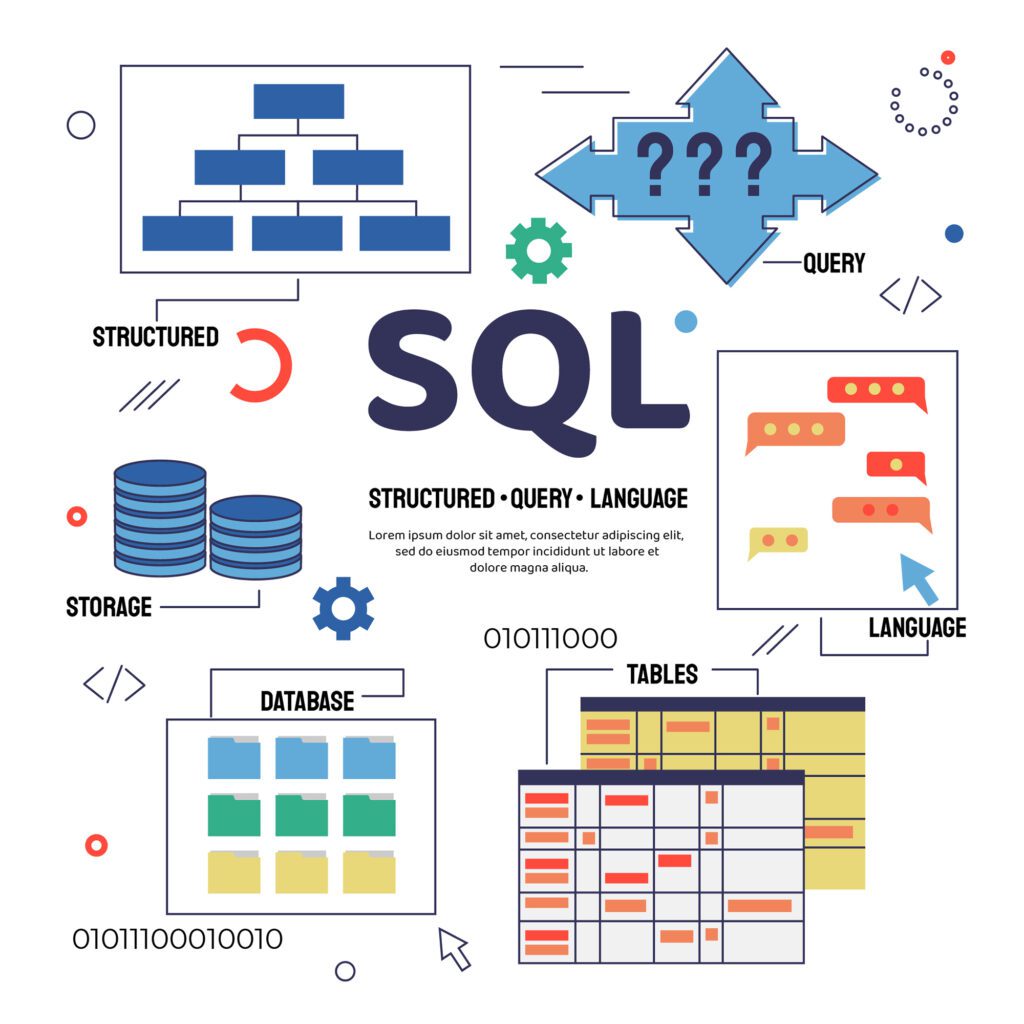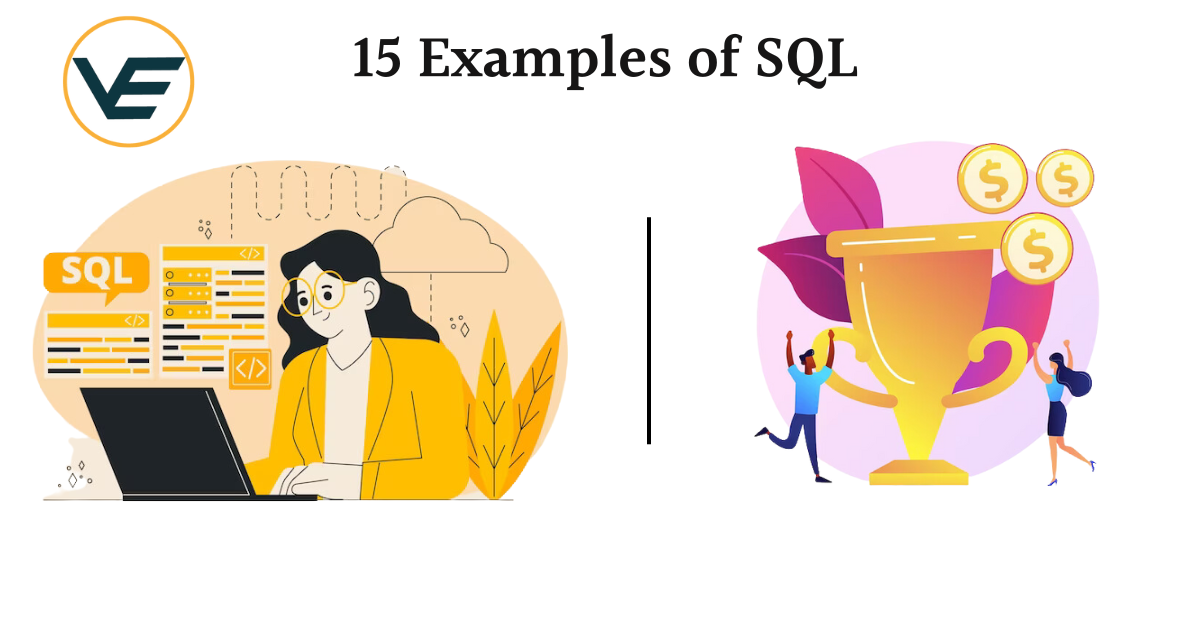SQL, which stands for Structured Query Language, is a domain-specific programming language used for managing and manipulating relational databases. It is designed to work with relational database management systems (RDBMS) and allows users to interact with databases to store, retrieve, modify, and delete data. SQL provides a standardized way to communicate with databases and perform various operations on the data stored within them.

Examples of Structured Query Language(SQL)
Here are 15 examples of SQL (Structured Query Language) commands that are commonly used for database management:
- SELECT: Used to retrieve data from one or more database tables.
- INSERT: Allows you to add new records into a database table.
- UPDATE: Used to modify existing records in a database table.
- DELETE: Allows you to remove specific records from a database table.
- CREATE TABLE: Used to create a new database table with specified columns and data types.
- ALTER TABLE: Allows you to modify the structure of an existing database table, such as adding or dropping columns.
- DROP TABLE: Used to delete an entire database table and its data.
- CREATE DATABASE: Allows you to create a new database in the database management system.
- DROP DATABASE: Used to delete an entire database and all its associated tables and data.
- WHERE: Enables you to apply conditions to filter data in SELECT, UPDATE, or DELETE statements.
- ORDER BY: Used to sort the result set in ascending or descending order based on specified columns.
- GROUP BY: Allows you to group rows together based on specified columns and apply aggregate functions like SUM, COUNT, AVG, etc.
- JOIN: Used to combine rows from two or more tables based on a related column between them.
- HAVING: Enables you to filter data after using GROUP BY and applying conditions to aggregated values.
- INDEX: Allows you to create indexes on database tables, improving query performance.
SQL is a standard programming language for interacting with relational databases. It plays a crucial role in data management, retrieval, and manipulation in a wide range of applications, from web development to business intelligence. Understanding SQL and its commands is essential for efficient database querying and maintenance.

